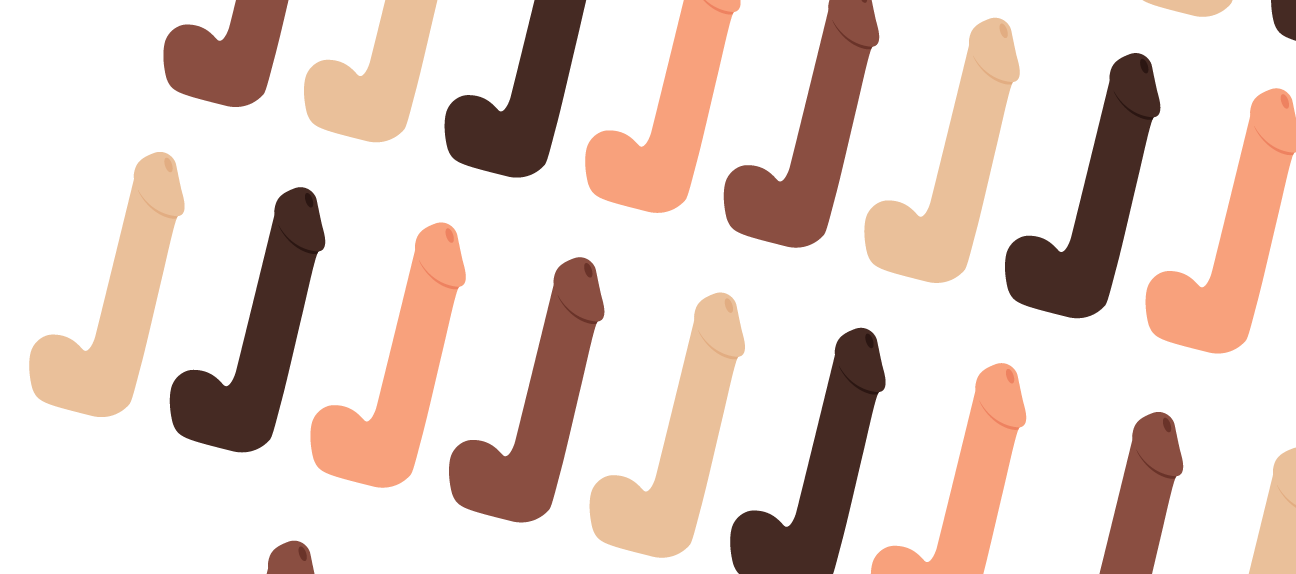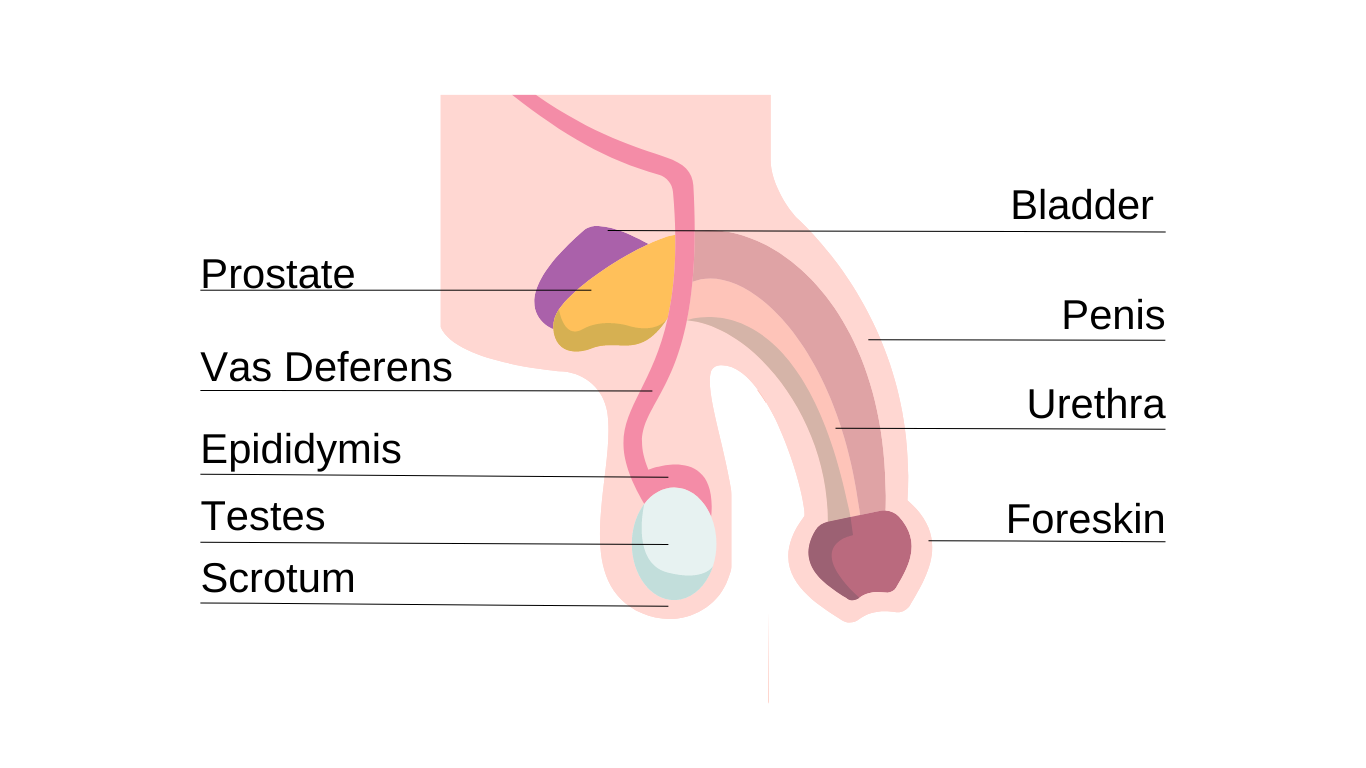The Penis


The penis is formed of two parts: the head (glans) and the shaft. The head is much more sensitive than the shaft. The penis has two main functions: urination and ejaculation. The average non-erect penis size is 3.7 inches and 5-7 inches erect. Every penis is different; it can vary greatly in length, width, shape, and angle. The penis does not stop growing until around 21 years of age.
The Foreskin is a retractable roll of skin that covers the head of the penis to protect the glans. The foreskin can be retracted to expose the glans.
The testes are two oval-shaped organs located in the scrotum. Sperm takes 73 days to form in the testes and a further 26 days to mature in the epididymis. The Vas Deferens is a narrow tube that stores sperm. During ejaculation, sperm is forced from the epididymis and out of the urethra via the vas deferens.
The seminal vesicles are a pair of coiled glands that produce and store fluid that supplements semen production.
The Cowper’s glands are located on either side of the prostate gland. They secrete fluid to help protect sperm as it passes through the urethra during ejaculation. This fluid is known as pre-ejaculate.
The ejaculatory ducts are each located behind the bladder and pass through the prostate gland to direct semen into the penis.
The spermatic cords support the testes in the scrotum. This structure contains the vas deferens, several arteries, veins and nerves.
The primary functions of the penis are urinary and sexual. The sexual function of the penis can be described as two stages: erection and ejaculation.
Urination is the release of urine (pee) from the body. This occurs when urine passes from the bladder through the urethra to the meatus. The urine is pushed out of the body by the contraction of the detrusor muscle in the wall of the bladder. Between the penis and the bladder is the external sphincter muscle, which can be controlled to hold in or release urine.
Ejaculation is when semen is released through the end of the penis. It usually happens after a person has reached sexual climax (orgasm), but it can also happen without climax.
Erections are triggered by emotional, physical, or hormonal stimuli. Erections occur when arteries dilate and fill the penis with blood. This fills and stiffens the spongy columns of tissue inside the penis shaft, creating an erection. Erections commonly occur with sexual stimulation, but they are not always voluntary; it’s normal to experience erections while sleeping, sometimes up to 5 a night lasting approximately 20 to 30 minutes depending on sleep quality. It is common to still be experiencing the last erection of the night upon waking; this is often called 'morning glory'.
During sex or masturbation, semen is released from the penis - this is called ejaculation. Semen is made up of sperm, seminal fluid, and prostate fluid. Each ejaculation contains between 200 – 600 million sperm. It’s not possible to prevent ejaculation once sexual arousal has peaked. It is common for young men to involuntary ejaculate during sleep; this is commonly known as a 'wet dream'.
Before ejaculation, a small amount of fluid is released from the penis, this is called pre-ejaculate or pre-cum. It’s possible for this fluid to contain sperm.
Ejaculation is the discharge of semen from the penis. It is usually accompanied by a sexual response called an orgasm.
Ejaculation involves a series of simultaneous, involuntary muscle contractions:
• First, a tube called the vas deferens contracts, propelling sperm from the testicles to the ejaculatory duct.
• At the same time, the prostate gland and seminal vesicles contract, adding fluids that make up most of the volume of semen.
• At the same time, rapid contraction of muscles at the base of the penis propel semen out of the penis.
Just like any other body part, the penis can vary greatly from person to person. For penises, people typically notice differences in measurements and appearance.
Penises come in different lengths and girths, and this changes when flaccid or erect. Some people may measure the base-to-head ratio. There is no single size that is better than others, and people will have their own personal preference. There are more important factors for sexual compatibility than just penis size.
When erect, some penises may be straight, while others may have a bend. Penile curvature is common, rarely painful, and does not usually make penetrative sex more difficult. In fact, in some cases, penile curvature may be more pleasurable for the receiving partner.
Some people may or may not have a foreskin on their penis. Some individuals may have the foreskin surgically removed in a procedure called circumcision.
It is advisable to regularly wash your penis using a mild soap. You should avoid abrasive or heavily scented products as they can irritate the penis. You can also use this time to check the penis for anything that appears unusual or different. This can include checking the testicles for any lumps.
You should also consider using barrier methods, such as condoms, when having sexual intercourse, and undergo regular sexual health screenings, even if you are in a monogamous relationship.
Other tips can include general advice to improve overall health. This may involve eating a healthy diet, getting regular exercise, limiting alcohol consumption, and trying to avoid smoking.
Yes, the "pulling out" method is an unreliable method of contraception as it’s possible to conceive with pre-ejaculatory fluid. We recommend using a reliable method of contraception to prevent pregnancy.
Phimosis is a condition where the foreskin is too tight to retract fully; this can be normal in babies and young boys but may indicate a problem in older boys and men and may require medical intervention. If you are experiencing pain in the penis or in retracting the foreskin, it is best to get it checked out by the sexual health service or your GP.
There are a number of penis problems that can result in penis pain, itching or general penile discomfort. If you experience any of the following, it is always best to get it checked out by the sexual health clinic or your GP.
• Itching
• Pain
• Discharge
• Lumps and bumps